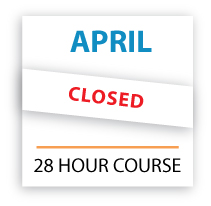Tongue Thrust, a Misnomer?
Published: May 1, 2023
While most of us know that the term “tongue thrust” is antiquated and does not describe an orofacial myological (myofunctional) disorder, we continue to see that term used. It may be acceptable to explain the presence of the tongue’s being “thrust” between the teeth as a symptom of a disorder; however, claiming that tongue thrust is the actual disorder is not correct. A tongue thrust is not a problem in and of itself, but rather one of many symptoms underlying an orofacial myological disorder.
The thrusting movement between the teeth and the resultant open bite were among the earliest symptoms noted by dentists many decades ago. Sadly, far too many professionals and lay persons seem to have “stuck” with that term and continue to use it incorrectly to describe the actual disorder. Since terminology can act to assist progress or impede it, the research and knowledge that is available now should be taken into consideration when addressing any type of audience or readership. An example of an article was called to my attention. We will look at only a few of the claims and solutions brought forth that are not consistent with what we have known for many years. I am placing links to articles where you will find information that explains the errors in the claims.
The article’s claims:
1. Tongue thrust appears when the tongue presses forward too far in the mouth, resulting in an abnormal orthodontic condition called an “open bite.”
Comment: The forward placement or brief “thrust” between the teeth during swallows does NOT cause an open bite.
"Myths That Persist About Orofacial Myology" Article (Read Myth #1 in particular)
2. Tongue thrust (which the author describes as an actual condition) causes a swallowing pattern known as reverse swallow.
Comment: The term “reverse swallow” is also antiquated (as is infantile swallow). We understand now that a swallow cannot be in “reverse” or it would be similar to an act of spitting, perhaps! The tongue moves forward in many types of orofacial myological disorders but that is not swallowing in reverse. As found in some of the included links, it is known that the forward movement of the tongue during swallowing and speaking is a reaction to, and not a cause of, malocclusions, speech disorders, or eating difficulties. Much of the time the undesirable tongue placement is compensatory or obligatory, meaning that certain conditions exist that necessitate a forward position of the tongue in order to enhance the ability to breathe, chew, and speak.
3. They might also have a larger-than-normal tongue.
Comment: The tongue is of normal size with the population typically seen for orofacial myology treatment. While true macroglossia does exist in the rare instance of conditions such as Beckwith-Wiedemann syndrome, these clients are not typically seen for orofacial myology (myofunctional) therapy. People with Down Syndrome were once thought to have greater-than-typically-sized tongues, but we know now that it is the maxilla and other factors that affect the appearance and placement of the tongue in those cases. The tongue is of normal size.
Obligatory "tongue thrust" and relative macroglossia in Down Syndrome (OM News)
Q&A - Why the tongue looks smaller after treatment
4. A number of different healthcare professionals can diagnose tongue thrust, including:
• general practitioners
• pediatricians
• speech pathologists
• dentists
• orthodontists
Comment: By suggesting that the reader obtain diagnosis from certain practitioners, this author is making an assumption that this specialty area is included in typical professional training, which is rarely, if ever, the case. Only those specially trained can reliably diagnose an orofacial myofunctional disorder. The same is true for treatment. Acceptable training is imperative prior to assessing or treating patients.
5. Some practitioners may evaluate swallowing patterns by holding down the bottom lip to watch how you or your child swallows.
Comment: Merely pulling down the lip is not by any means an acceptable method of assessing/evaluating an OMD since doing so is more likely to instigate an unnatural swallow.
Q&A - Incorrect Swallow Evaluation Creates False Positive
The purpose of this article is not to criticize this or any other individual who is earnestly trying to get the word out and give advice, but rather to call attention to the importance of doing proper research in order to stay state of the art, and also to be well versed in the research and studies that have been solid and withstanding throughout the history and growth of orofacial myology as a specialty area for dental, medical, and speech pathology professionals.






